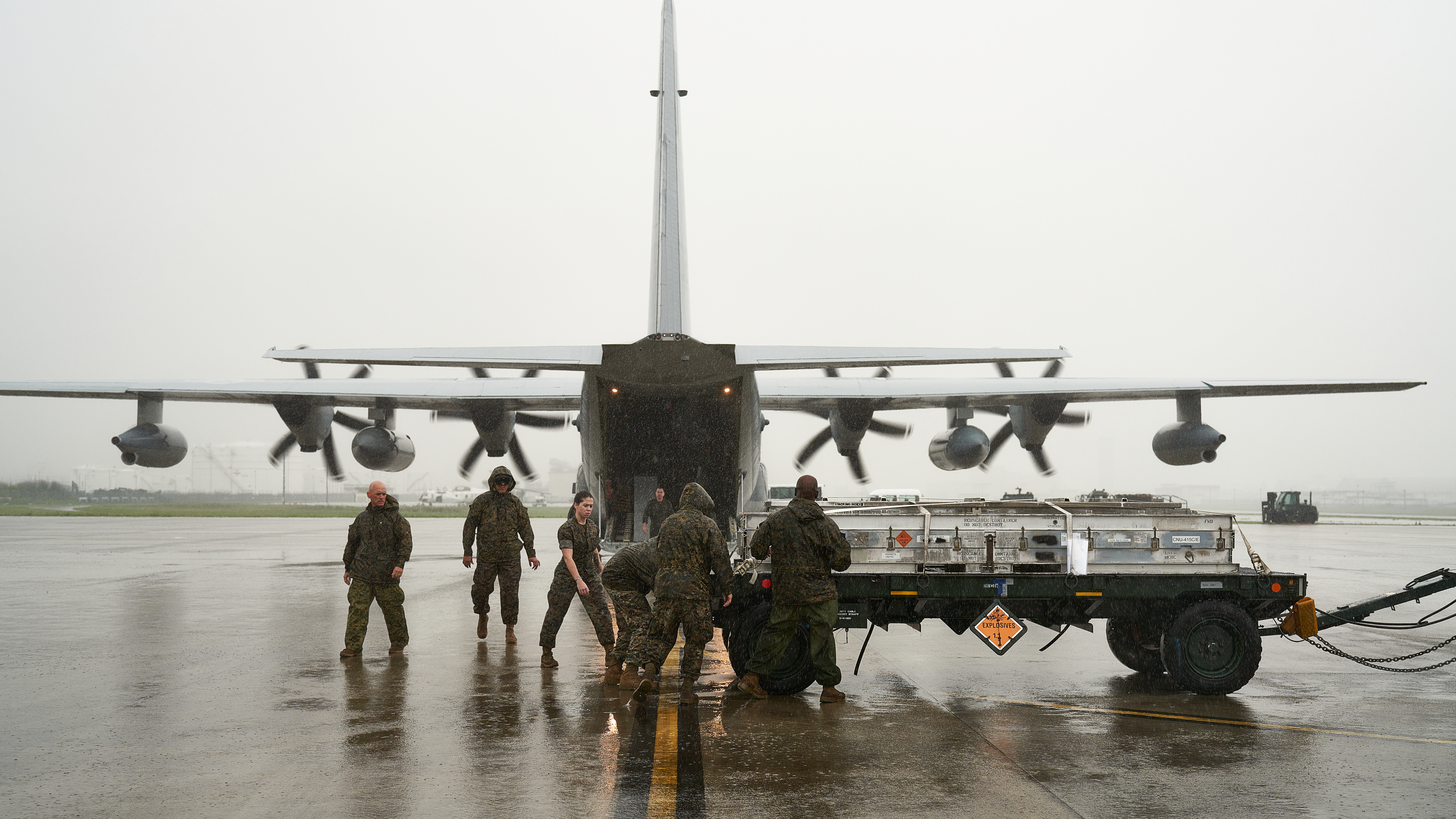One deceased crew member has been recovered after a U.S. military aircraft crashed off the coast of southern Japan Wednesday, a Japanese Coast Guard spokesperson said, according to The Associated Press.
The Osprey tiltrotor aircraft originated out the U.S. Marine Corps Air Station Iwakuni in Yamaguchi and went down while en route to the U.S. Air Force’s Kadena Air Base on Okinawa, the AP reported. The coast guard did not know the cause of the crash and could not confirm the status of the remaining five crew members, but Japanese Vice Defense Minister Hiroyuki Miyazawa later said the Osprey attempted an emergency sea landing.
Initial reports said the Osprey carried eight crew members, but the U.S. military revised the number to six, coast guard spokesperson Kazuo Ogawa told the AP. Local media reported that witnesses saw flames spitting from the aircraft’s left engine as it crashed. (RELATED: Marine Corps Changes Emphasis On Safety After Series Of Deadly Accidents In One Month)
The Osprey is hybrid aircraft capable of vertical takeoff and landing, like a helicopter, but can travel forward at faster speeds like an airplane. The Air Force, Navy and Marine Corps each operate versions of the Osprey.
Marine Corps Air Station Iwakuni did not immediately respond to the Daily Caller News Foundation’s request for comment, but the Marine Corps confirmed to the DCNF that the downed Osprey was not a USMC aircraft. The Air Force did not immediately respond to the DCNF’s request for comment.
U.S. and Japanese officials said the aircraft was attached to Yokota Air Base in Tokyo, the AP reported.
The coast guard had received an emergency communication from a fishing vessel near Yakushima, an island further south of Japan’s southern main island Kyushu, Ogawa told the outlet. Patrol boats and aircraft responded to the distress call and found what appeared to be aircraft debris, a vacant inflatable life raft as well as one person, who was later pronounced dead.
“The government will confirm information about the damage and place the highest priority on saving lives,” Chief Cabinet Secretary Hirokazu Matsuno said, the AP reported.
U.S. Marines assigned to Marine Aviation Logistics Squadron 12, Marine Aircraft Group 12, and Marine Aerial Refueler Transport Squadron 352 (VMGR-352), move ordnance onto a KC-130J Super Hercules aircraft at Marine Corps Air Station Iwakuni, Japan July 7, 2023. (U.S. Marine Corps photo by Sgt. Mitchell Austin)
The Osprey has been involved in several accidents, often fatal, in recent years, particularly among the Marine Corps. The MV-22, a version of the Osprey the Marine Corps operates, has a known issue where the clutch engagement malfunctions that has likely contributed to several fatal accidents in the past decade.
In August, an MV-22 crashed in Australia, killing at least three of the 23 crew members and injuring others.
All content created by the Daily Caller News Foundation, an independent and nonpartisan newswire service, is available without charge to any legitimate news publisher that can provide a large audience. All republished articles must include our logo, our reporter’s byline and their DCNF affiliation. For any questions about our guidelines or partnering with us, please contact [email protected].

